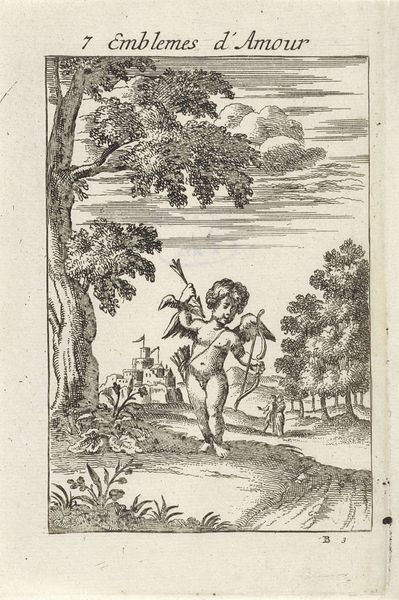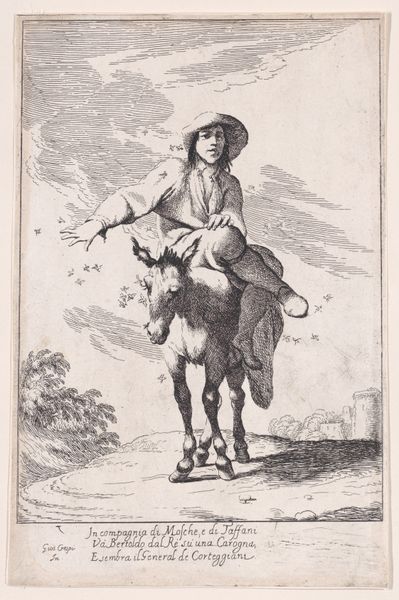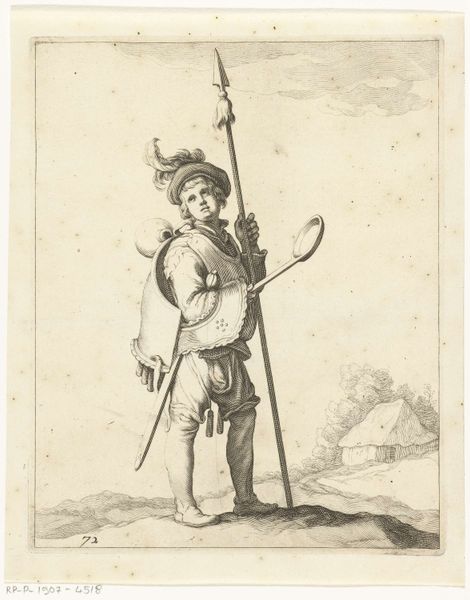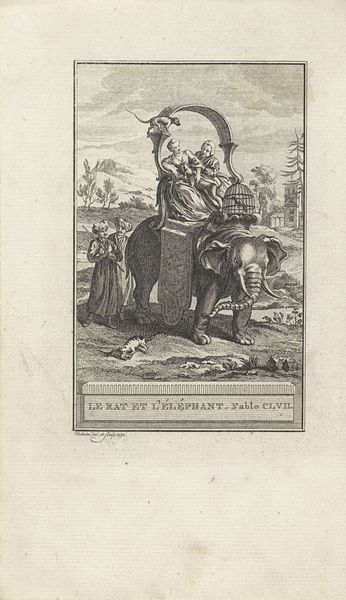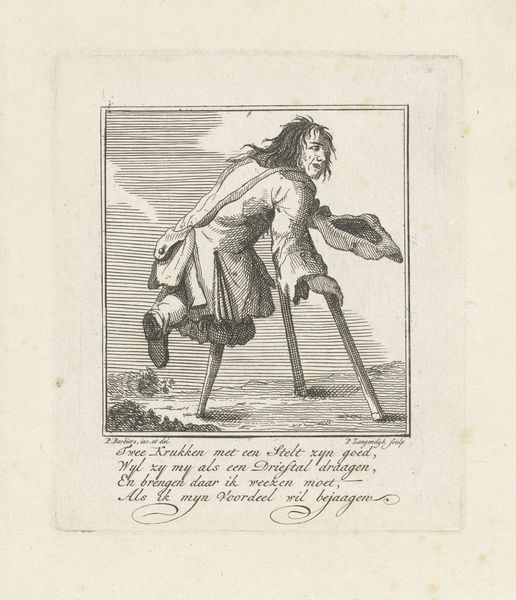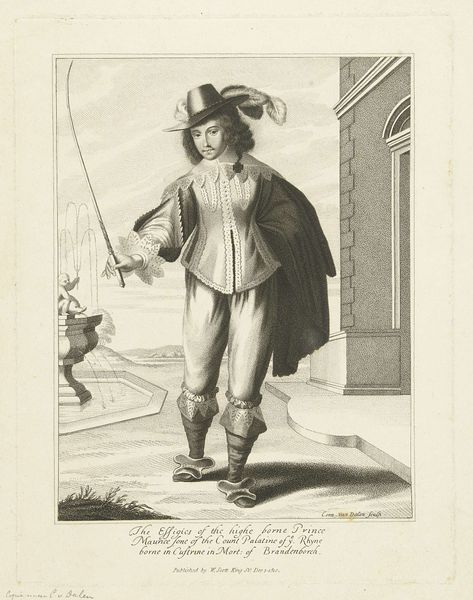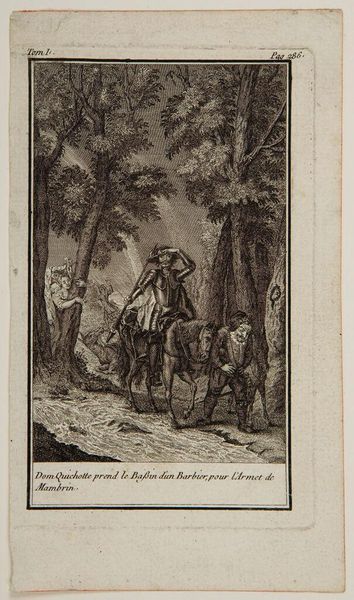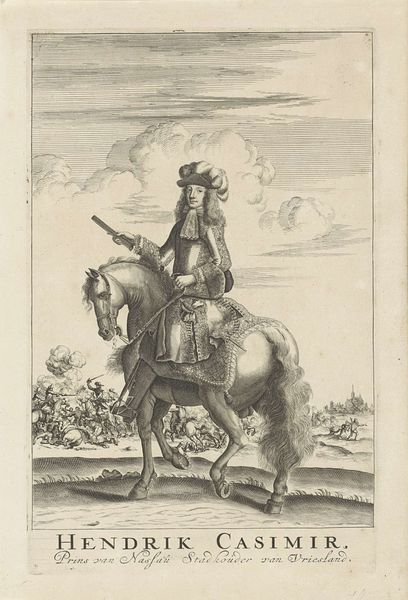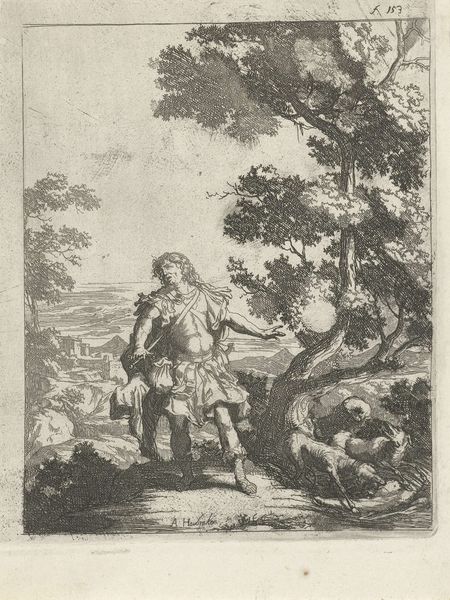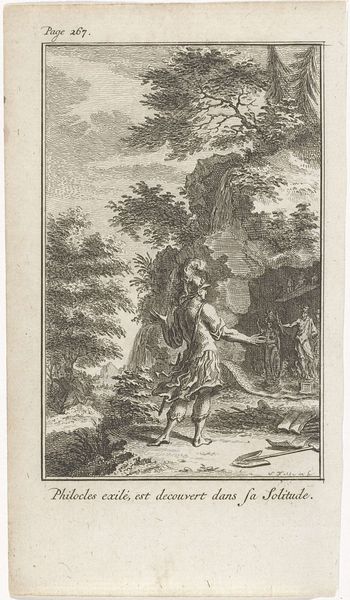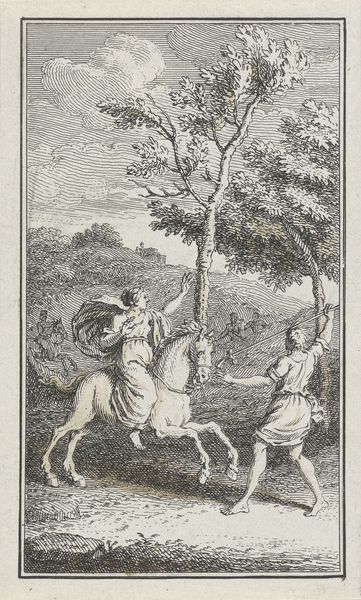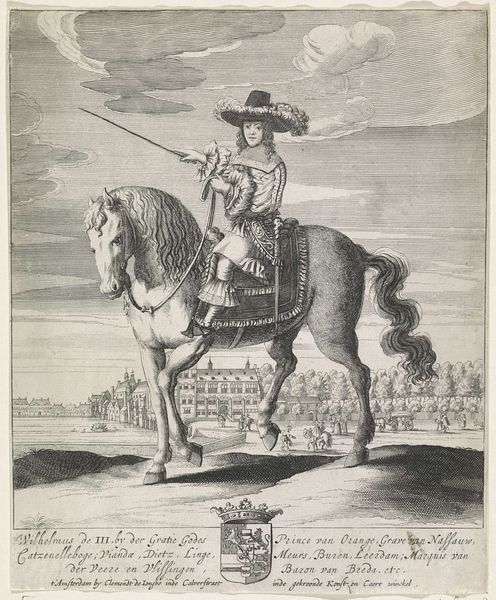
print, engraving
#
baroque
# print
#
old engraving style
#
landscape
#
figuration
#
genre-painting
#
engraving
Dimensions: height 228 mm, width 153 mm
Copyright: Rijks Museum: Open Domain
Curator: Let's turn our attention to "Bertoldo op de ezel," or "Bertoldo on the Donkey," an engraving by Giovanni Battista Crespi dating from around 1710 to 1715. Editor: Immediately, the overriding impression is one of precariousness. The figure seems utterly unbalanced atop that donkey, which, in turn, looks incredibly spindly. The lines are so fine—delicate, even—that the whole composition feels brittle. Curator: The engraving exemplifies a baroque aesthetic with its dynamic composition and intricate details. Look at how Crespi employs hatching and cross-hatching to create tonal variations and volume, lending a tactile quality to the figures. The line quality itself conveys the illusion of form. Editor: That’s interesting. To me, the donkey here evokes several well-worn symbolic readings: stubbornness, foolishness, but also, surprisingly, humility and peace. His posture is certainly awkward. He gestures out at a flurry of small figures around him; could he be warding off malevolent forces? Curator: It’s key to note the relationship of figure to ground, especially as concerns how Crespi handles depth in a restricted pictorial field. He guides the eye gradually from the front to the more recessive forms behind the main grouping using these fine etched lines, indicating the recession in space. Editor: These may also be suggestive of anxieties surrounding status and appearance during the period in which it was made. Note, too, that the backdrop, rendered so simply with the buildings in the far right, offers a social stage. I can imagine Bertoldo as something of a court jester or a low-status buffoon. Curator: Perhaps Crespi invites us to consider the printmaking techniques, themselves, as they mimic the fragility and temporality of life? The delicate line work can easily erode, and the image degrades the more it is mechanically reproduced; it suggests entropy. Editor: Indeed, Giovanni’s "Bertoldo op de ezel," appears at first to be an image about human failing; and yet, with some contemplation, it is a piece brimming with possible alternative meaning. Thank you for giving me insight into its construction.
Comments
No comments
Be the first to comment and join the conversation on the ultimate creative platform.

